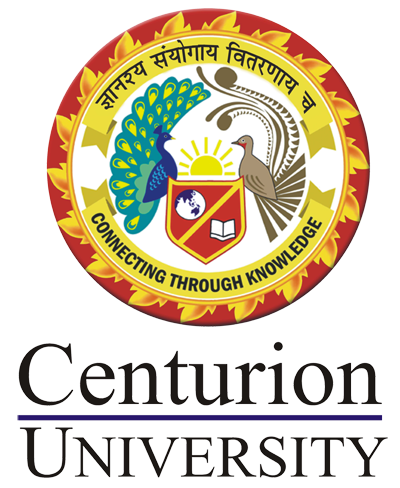Crime Scene Management & Criminal Profiling
Course Attendees
Still no participant
Course Reviews
Still no reviews
Course Name : Crime Scene Management & Criminal Profiling
Code(Credit) : CUTM2451 (3-0-0)
Course Objectives
- To make students understand about the crime and its
- To learn about the techniques behind management of different crime
- To understand about the importance of evidences and its correct collection &
- To learn about the concept of chain of custody & its
Course Outcomes
- To demonstrate the art of collecting, packaging and preserving different types of physical and trace evidence at crime scenes.
- To attain skills in using various tools and techniques for analysis of different types of crime scene evidence.
- To understand the significance of criminal profiling and victim profiling in crime scene investigation
Course Syllabus
MODULE -I : CRIME SCENE EVIDENCE
Introduction to the crime scene, Types of crime scene, Evaluation and processing of crime scene, securing the scene of crime, documenting the crime scene: Note making, sketching
Searching techniques of Crime scene, Processing of physical evidence-discovering, recognizing and examination of physical evidences
Collection, Safety measures for evidence collection, Preservation, Packaging, sealing, labelling and forwarding of physical evidences, maintaining the chain of custody, Probative value of physical evidences, Reconstruction of scene of crime
Photography: Photography (Cameras-SLR &DSLR, lenses, filters, films, exposing, development & printing, different kinds of developers and fixers. Specialized photography- UV, IR, close up. Photography using scientific equipment, role of the first arriving officer at the crime scene, Digital Imaging of Crime Scene, 3-D scanning technique, videography of crime scene
MODULE -2: PHYSICAL EVIDENCES
Introduction to physical evidences, Types of physical evidences, Classification and Role of physical evidences in Criminal Investigations & Trails.
Crime Detection Devices: UV, IR, X-Rays, their nature and applications, Detective Dyes, Neutron Radiography, Speed Detection Devices, Tools: Basic Kits, Investigator’s Kit, Tools used in Mobile laboratory. Digital Imaging of Crime Scene, 3-D scanning technique, Tele forensic Technology for crime scene investigation, Information, Manpower, and logistics management of crime scene , Technology innovation in crime scene management, Case studies & report writing of crime scene visits. National and International scenario of crime scene management
MODULE -3 : CRIMINAL PROFILING
History of Profiling, Behavioural Evidence Analysis, Criminal motivation, Crime scene investigation, Victim profiling, Psychological Autopsy, Sexual Offences, Geographical Profiling, Criminal behaviour on the internet, Case studies.
References and Suggested Readings:
1. J.Walls; Forensic Science-An Introduction to Scientific Crime Detection 2nd Ed.,Universal, 1st Indian Reprint (2002).
2. Richard Saferstein; Criminalistics-An Introduction to Forensic Science 5th Ed., Prentice Hall (1995).
3. Jay A.Siegel, Pekka J Saukko and Geoffrey C. Kooupfer; Encyclopedia of Forensic Science, Academic Press (2000).
4. E.R.Mengel; Forensic Physics in 2002 year book, McGraw hill Encyclopedia of Science & Technology.
5. Jenkins and White; Fundamentals of Optics; Mc Graw Hill; Fourth Ed, (I) James, S.H. And Nordby, J. J.; Forensic Science; An Introduction to Scientific And Investigative Techniques, CRC Press USA
6. M. Byrd, Crime Scene Evidence: A Guide to the Recovery and Collection of Physical Evidence, CRC Press, Boca Raton (2001).
7. T.J. Gardener and T.M. Anderson, Criminal Evidence, 4th Ed., Wadsworth, Belmont (2001).
8. S.H. James and J.J. Nordby, Forensic Science: An Introduction to Scientific and Investigative Techniques, 2nd Edition, CRC Press, Boca Raton (2005).
9. W.J. Tilstone, M.L. Hastrup and C. Hald, Fisher’s, Techniques of Crime Scene Investigation, CRC
Press, Boca Raton (2013).
Session Plan
Session 1
Introduction to the crime scene, Types of crime scene, Evaluation and processing of crime scene, securing the scene of crime,
pdf: Introduction to the Crime Scene and Processing Procedures
Session 2
documenting the crime scene: Note making, sketching .
Searching techniques of Crime scene, Processing of physical evidence-discovering, recognizing and examination of physical evidences
Session 3
Collection, Safety measures for evidence collection, Preservation, Packaging, sealing, labelling and forwarding of physical evidences,
Session 4
maintaining the chain of custody, Probative value of physical evidences,
https://study.com/learn/lesson/chain-of-custody-definition-examples.html
Session 6
Photography: Photography (Cameras-SLR &DSLR, lenses, filters, films, exposing, development & printing, different kinds of developers and fixers.
Session 8
Photography using scientific equipment, role of the first arriving officer at the crime scene,
Session 9
Digital Imaging of Crime Scene, 3-D scanning technique
Session 11
Introduction to physical evidences, Types of physical evidences,
Session 12
Classification and Role of physical evidences in Criminal Investigations & Trails.
Session 13
Crime Detection Devices: UV, IR, X-Rays, their nature and applications,
Session 14
Detective Dyes, Neutron Radiography, Speed Detection Devices,
Session 15
Tools: Basic Kits, Investigator’s Kit, Tools used in Mobile laboratory.
Session 16
Digital Imaging of Crime Scene, 3-D scanning technique,
Session 17
Tele forensic Technology for crime scene investigation, Information, Manpower, and logistics management of crime scene ,
Session 18
Technology innovation in crime scene management, Case studies & report writing of crime scene visits.
Session 19
National and International scenario of crime scene management
Session 20
History of Profiling, Behavioural Evidence Analysis,
Session 21
Criminal motivation, Crime scene investigation,
Session 22
Victim profiling, Psychological Autopsy
Session 23
Sexual Offences
Session 24
Geographical Profiling
Session 25
Criminal behaviour on the internet, Case studies.

